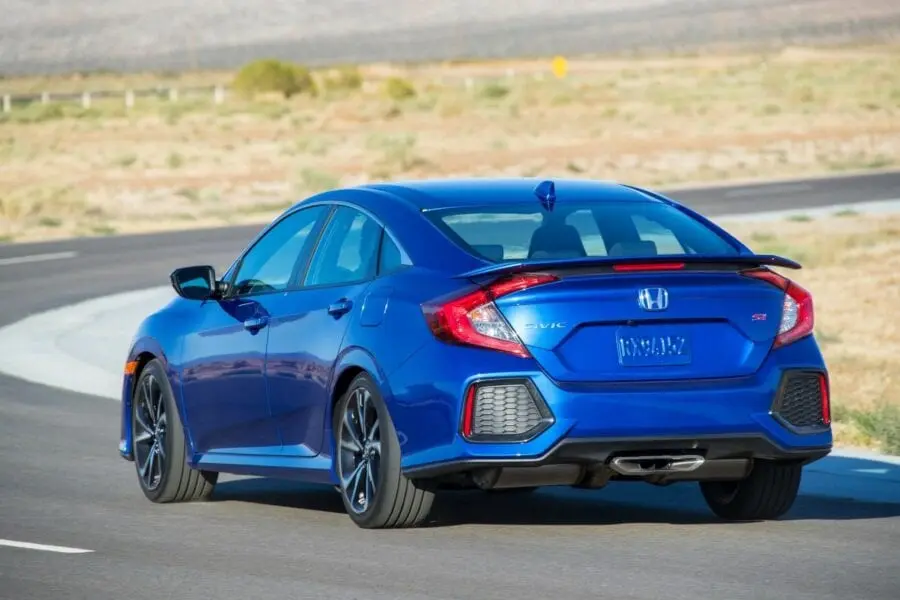
Aprilia SR 50 Ditech
Aprilia has been successfully participating in the World Motorcycle Racing Championship for the second decade. With the introduction of the RSV Mille in a year, they also became famous in the superbike class. That is why all lovers of the excellent results of the Italian factory from the immediate vicinity of Venice (especially the young ones) were offered a version of the scooter, painted in the colors of the Aprilia superbike team.
Black, the head of a Venetian lion (trademark of the factory racing team) and a sticker with the name of Aprilia driver Troy Corser are not the only similarities to the real car with which Aprilia won the world title last year. The knowledge and insights of the engineers were also carried over from the racetrack to their road models, so it's no surprise that the SR 50 surprised just about everyone who tested it. Amazing stability and very good handling are the main features of a small two-wheeled bicycle.
Winding road
The scooter is technically the same as the previous SR 50. Beneath the plastic body is a sturdy tubular frame with the motor attached under the seat. This one carries the rear wheel. Suspension - classic, but serviceable for Aprilio.
While driving on a winding road, I am impressed by the calmness in the turn, as I did not feel insecure and fear of falling for a moment. Riding properly on a scooter that is spacious enough in length and height to allow body movements to transfer its weight to the inside of the turn, to the front wheel, or simply to the pedals—to the floor, in fact. scooter - contributes to the accuracy of riding.
Crisis situations are handled by disc brakes with twin-piston calipers, which can also be fatal for inexperienced drivers, as the deceleration under full load on the brake lever is enormous. In the case of the scooter, it is of course emphasized that the rear brake is very important. Works well here.
Sharp accelerations
Skepticism about how electronic fuel injection works was overkill because, apart from a slight hesitation when starting a cold engine, we have no comment. What did fuel injection bring? Completely new power curve. The engine no longer stalls unnaturally, which is a disadvantage of a large number of scooters: they only develop full power when they are unlocked.
The Aprilia engine, assembled at the new San Marino plant, now reaches the full power required for good acceleration and does not exceed the legal speed limit of 50 kilometers per hour. Extremely good acceleration out of town is the result of this milk-tooth injection system, and fuel consumption is fantastically low at just 2 liters per 100 km. We haven't reached that in tests yet!
The disadvantage of electronic fuel injection lies in its complete dependence on electricity: when the battery is discharged, the engine does not start, since it was impossible to install a foot starter.
Without superficiality
Due to its precise execution, Aprilia has escaped criticism due to the Italian superficiality, as the combination of plastic armor is impeccable. The location of the switches is commendable, only the turn signal switch gets in the way, as it is too sensitive and likes to slide on the unwanted side.
There is plenty of room under the seat for a helmet, tools, an extra padlock, and room for personal items, especially a windbreaker, which can come in handy on cold evenings and summer storms.
The desire to emulate the greatest masters of motorcycling can easily come true with Aprilia's replica. Since the injection engine is responsive, driving in the city is safer.
dinner: 2086 46 euro
Representative: Car Triglav, Ljubljana
Technical information
engine: 1-cylinder – 2-stroke – liquid-cooled – vane valve – 40×39mm bore and stroke – DiTech electronic fuel injection – separate oil pump – electronic ignition – electric starter
Volume: 49, 3 cm3
Maximum power: 3 kW (4 hp) at 6750 rpm
Maximum torque: 4 Nm at 6250 rpm
Energy transfer: automatic centrifugal clutch - stepless automatic transmission - belt / gear drive
Frame and suspension: frame and suspension: single-double U-tube steel tubes - front telescopic fork, 90 mm travel - rear motor housing as a swingarm, shock absorber, 72 mm travel
Tires: front and rear 130 / 60-13
brakes: front and rear coil 1 x f190 with twin-piston caliper
Wholesale apples: length 1885 mm - width 720 mm - wheelbase 1265 mm - seat height from the ground 820 mm - fuel tank 8 l / reserve 2 l - weight (factory) 90 kg
Our measurements
Acceleration:
Typical slope (24% slope; 0-100 m): 24 sec
At road level (0-100 m): 13 s
Consumption: 1.89 l / 100 km
Mass with liquids (and tools): 98 kg
Our rating: 5/5
Text: Domen Eranchich and Mitya Gustinchich
Photo: Urosh Potocnik.
Technical information
engine: 1-cylinder – 2-stroke – liquid-cooled – vane valve – 40×39,2mm bore and stroke – DiTech electronic fuel injection – separate oil pump – electronic ignition – electric starter
Torque: 4 Nm at 6250 rpm
Energy transfer: automatic centrifugal clutch - stepless automatic transmission - belt / gear drive
Frame: frame and suspension: single-double U-tube steel tubes - front telescopic fork, 90 mm travel - rear motor housing as a swingarm, shock absorber, 72 mm travel
brakes: front and rear coil 1 x f190 with twin-piston caliper
Weight: length 1885 mm - width 720 mm - wheelbase 1265 mm - seat height from the ground 820 mm - fuel tank 8 l / reserve 2 l - weight (factory) 90 kg

